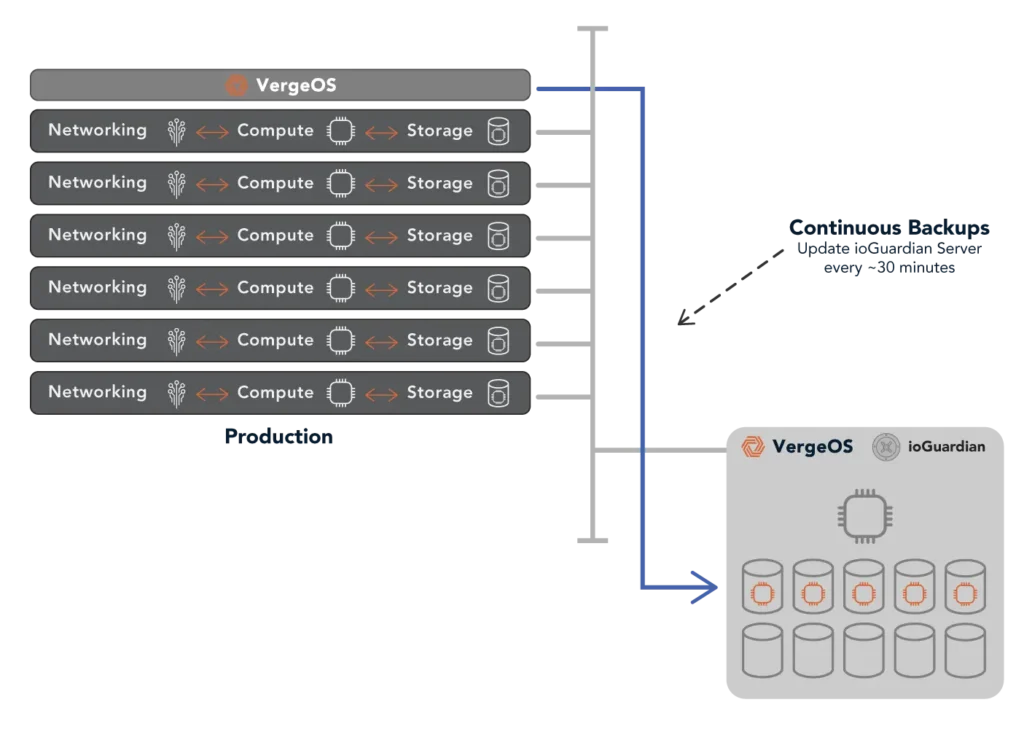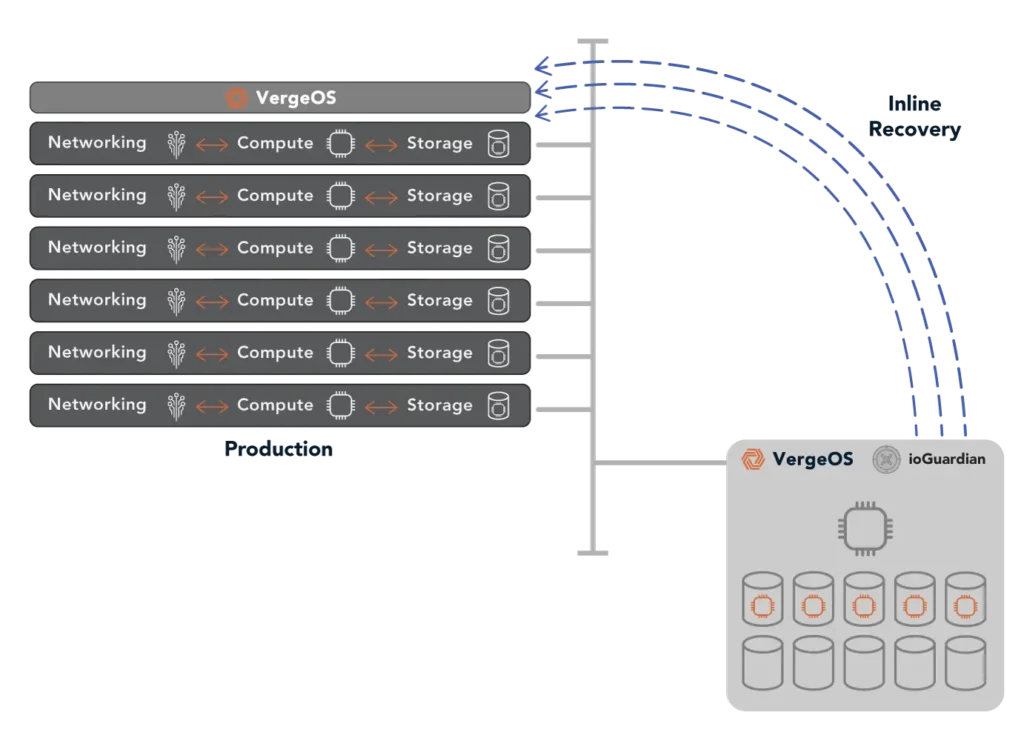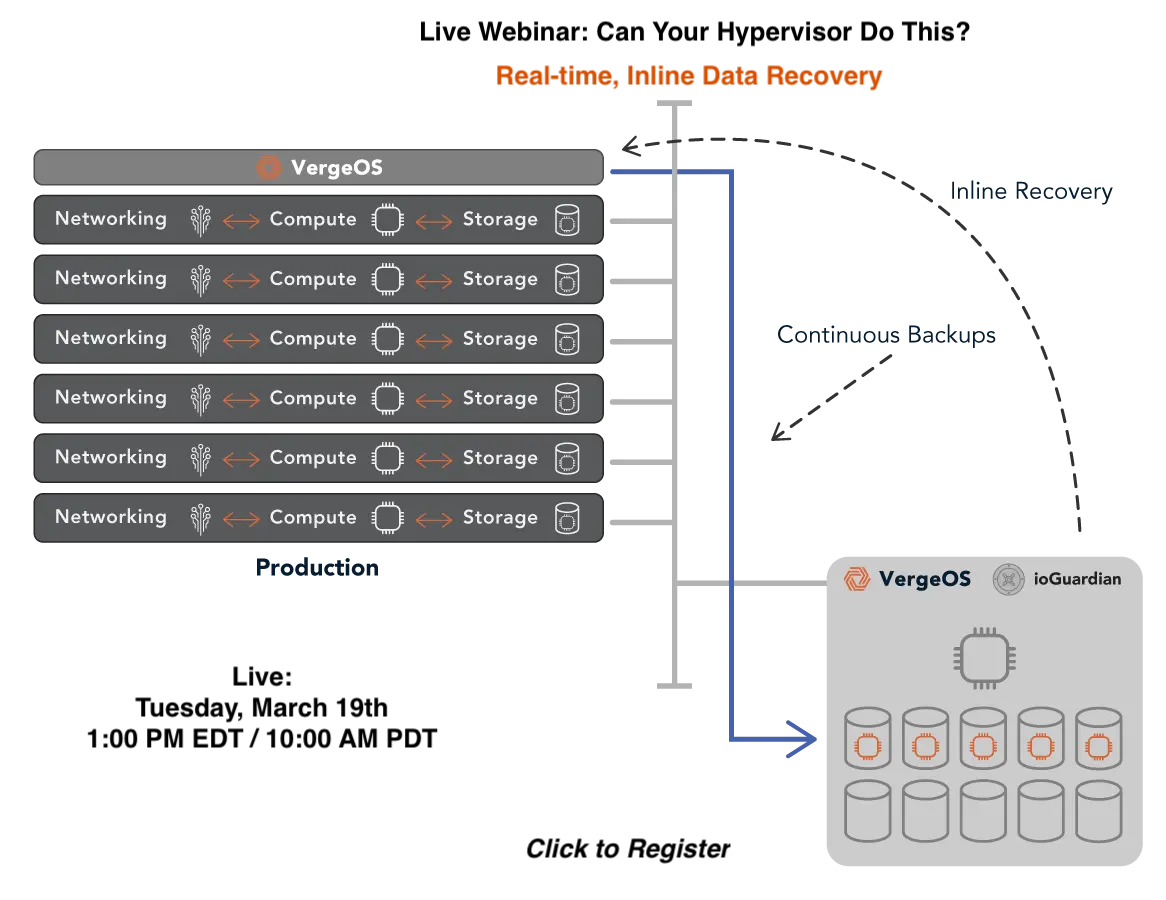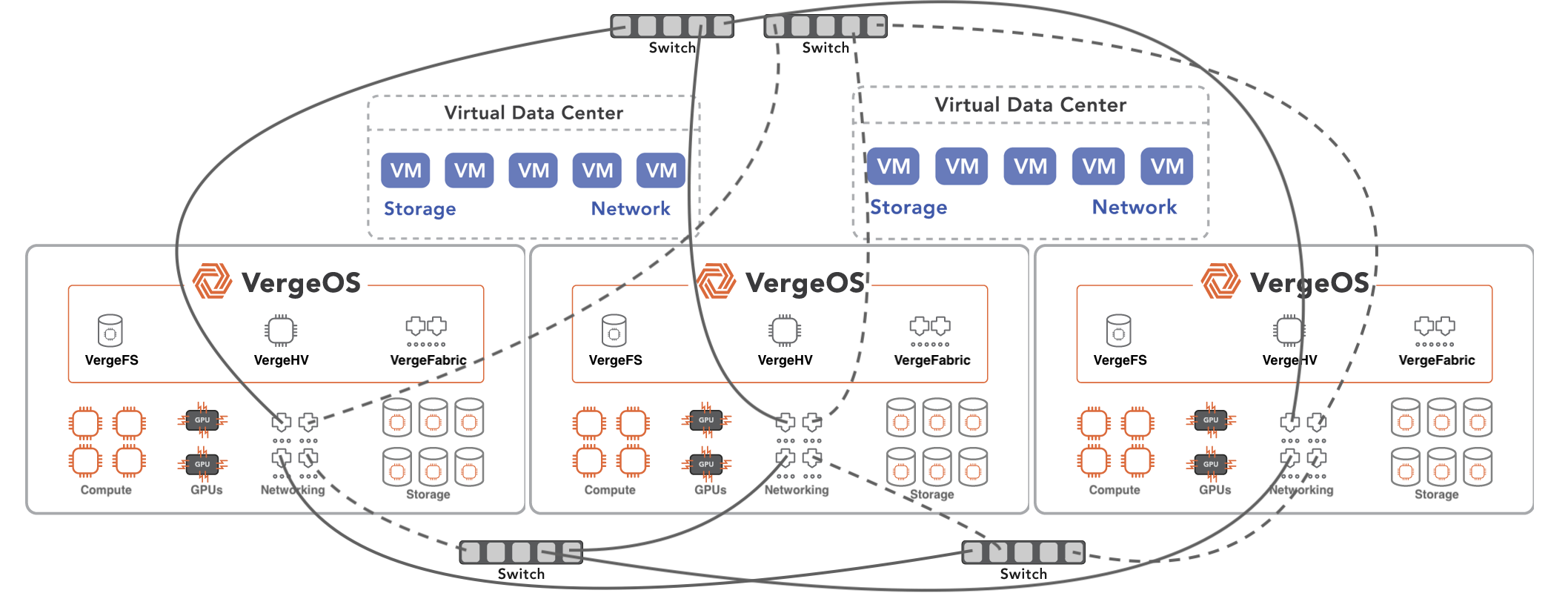While instant recovery was a critical step forward, customers are now looking for an instant recovery upgrade. The next advancement of recovery needs to maintain its point-in-time independence while shrinking recovery point objectives (RPO) and recovery time objectives (RTO). Traditional methods of data recovery can often lead to significant downtime, disrupt business operations, and lead to potential revenue loss. Instant recovery has filled that gap for a decade, but now customers need more. VergeOS’ ioGuardian for VergeOS is changing the landscape by offering real-time data recovery.
Understanding Real-time Recovery with ioGuardian
ioGuardian for VergeOS is a backup solution integrated into VergeOS. It is an instant recovery upgrade. Unlike conventional backup software, it offers inline recovery capabilities that ensure continuous data access, even in scenarios where traditional hardware failure protections fail, such as during multiple drive or node failures. Even instant recovery might cause delays, but ioGuardian delivers missing data segments to virtual machines (VMs) inline, enabling operations to continue without downtime.
One of ioGuardian’s key benefits is its ability to tighten RPOs and RTOs. It achieves this through the use of VergeOS snapshots, which can be executed frequently based on the customer’s needs, ensuring more regular data protection and inline recovery. This approach enables ioGuardian to provide real-time recovery of missing data segments, ensuring VMs can continue their operations seamlessly without crashing or requiring a separate recovery process. These capabilities are included in VergeOS at no additional charge other than licensing the server used for ioGuardian.
Setting Up Real-time Recovery

The setup for ioGuardian involves configuring a dedicated server as the ioGuardian target, which can be an older, repurposed server or storage system capable of running VergeOS. It runs outside the production instance and represents a third copy of data beyond the protections built-in to the production VergeOS instance. Since it is also running VergeOS, it also provides global inline deduplication, so the storage capacity needed for the ioGuardian server is optimized, allowing for reduced data transfer and footprint. Additionally, placing an ioGuardian server on-premises and at a remote location can enhance data recovery efforts by providing access to data blocks from multiple sources if needed.
Comparing Instant Recovery to Real-time Recovery
While there are a lot of rapid recovery technologies on the market, instant recovery was the former state-of-the-art. The concept offered by several backup vendors aims to quickly re-instantiate a VM on a backup appliance. While this method can be effective, it typically requires downtime for the VM to restart on the backup appliance. It is also hosted on the backup appliance, which might not offer the same performance as the primary system to the point that even though recovery is “instant,” performance is so bad that IT can’t use it.
Moreover, instant recovery often involves manual intervention from IT staff due to limitations in how often entire environments are protected and how available the IT team is. The actual RTO could range between four to eight hours. Also, instant recovery requires another manual intervention for IT to move the VM back into the production environment eventually. This may also cause an outage while the movement occurs.
When the drives are replaced, instant recovery does not aid in restoring those drives. Recovery requires a manual and complete restoration of the impacted volumes. Even a RAID rebuild will likely not work, and if it does, it will be very time-consuming and extract a performance toll.

As an instant recovery upgrade, ioGuardian’s inline recovery method introduces potentially no downtime. It provides the missing data segments to VMs in real-time, bypassing the need for IT intervention and achieving an instant RTO with an RPO of minutes. Furthermore, VMs continue running from the primary production hardware, avoiding the performance drawbacks of running on a backup appliance. As a result, an outage to move the VM back to the production environment is eliminated. Lastly, when the failed drives are replaced, the ioGuardian server rebuilds the data on those drives automatically, avoiding further restoration or time-consuming RAID rebuilds.
Conclusion
The real-time and instant data recovery comparison highlights the advanced capabilities and benefits of inline recovery solutions like ioGuardian for VergeOS. IoGuardian sets a new data backup and recovery standard by providing real-time data recovery without downtime or manual IT intervention. As businesses rely heavily on their data, adopting innovative recovery solutions while keeping costs in check will ensure operational continuity and resilience in the face of data loss challenges.
To learn more, register for our upcoming webinar, “Can Your Hypervisor Do This? Real-Time and Inline Data Recovery” We spotlight VergeOS’s ioGuardian capabilities, challenging the status quo of hypervisor functionality. Learn what it would take and how much it would cost for other hypervisors to deliver similar capabilities. We will also demonstrate live how ioGuardian delivers missing data segments to virtual machines (VMs), maintaining continuous operations even during multiple simultaneous hardware failures.




